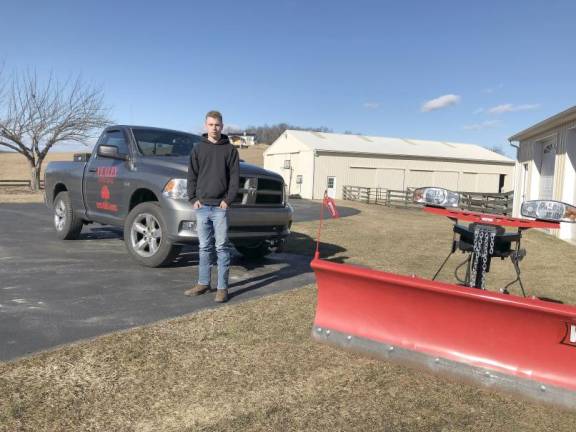No snowfall, falling profits
The winter economy. The lack of frozen precipitation means a very different season for area businesses.

“As I sit here in my office looking out at the mountain, every flake of snow I see has been made by us, and not mother nature,” Mount Peter Marketing Director John Baiata said last Friday when temperatures were in the 50s.
Due to a lack of significant snowfall – coupled with bouts of unseasonably balmy weather – the popular ski destination delayed opening its snow tubing lanes this season.
‘Every window that we get to make snow’
But thanks to a diligent overnight snowmaking crew, just over half of the mountain’s ski and snowboarding slopes are open. Tubing is opening Feb. 18, just in time for President’s Day Weekend.
“Every window that we get to make snow, even if it’s just a 10-hour overnight period,” he said, “we’re making snow.”
Temperatures have to be in the 20s and humidity levels need to be low in order for the snowmaking process to work. If conditions allowed snowmaking to happen more frequently this winter or if the area had gotten a couple snowstorms naturally, Mount Peter would likely have more trails open by now, Baiata said.
“All things considered, we’re having a decent year,” he added, estimating that sales are down between 10 and 15 percent this winter.
‘Everything has its trickle down effect’
Ray Davis, who operates his own snow plowing company, made about $20,000 in snow removal last year. This winter, the company has made just over $200.
In addition to snow removal, Davis’ business offers home improvement services, such as laying foundations and installing roofing. But despite lack the lack of snow and warmer temperatures, home improvement sales have not made up for the snow-related losses.
“Actually it’s been slow since November ... everything has its trickle down effect,” said Davis. “People aren’t spending money because they are waiting for the snow.”
For landscapers like William Vealey, who owns Vealey Landscaping in Wantage, N.J., this winter is an odd experience all around. His business model, which includes year-round lawn maintenance and snow removal, is seeing an uptick in winter brush cleanups and tree pruning in lieu of plowing.
“It’s a difference in profits, for sure, but it’s nice to have winter work. It’s a good time to clean up leftover leaves and brush when it’s cold, and the trees are bare,” he said. “I feel bad for the guys who only plow and rely on snow; they’re hurting this year.”
Vealey and his crew service most of Sussex County, N.J., and haven’t seen much to plow since the nor’easter in mid-December.
“I think I did over 20 driveways for that storm, but four inches in most places isn’t much in the way of snow,” he said, “I haven’t even gone through the first pallet of salt this year and likely won’t need more. Still, we’re likely due for one big storm. Probably in February.”
Falling profits
Rock salt, shovels and other snow removal products would normally be the main source of winter sales for Beck’s Hardware in Monroe, N.Y. But right now, those products aren’t moving off the shelves.
Manager Scott Levi said they’re staying optimistic and focusing on pushing other products – such as pet supplies – this season
Pike County Outfitters, meanwhile, saw sales drop 20 percent this year. Normally, the store would be slinging ice fishing gear and cold weather apparel all winter. With no ice on the lakes, business has been slow.
Store manager Pete Metzger said the store had a banner sales season last fall, which is alleviating financial troubles this winter. He’s hoping for a snowy March or an early spring as some customers are already gearing up for warmer days ahead.
“We did sell some kayaks over the weekend,” he said, “which typically people wouldn’t be thinking about buying already.”
‘Snowfall is hard to predict’
Nick Stefano, an archivist who records and studies local weather and is the founder of Sussex County Weather, built one of the country’s first 24-hour visual weather watch websites in the 1990s.
He said winters in the Northeast today are “just different.”
None of the long-term models predicted that January would be this snowless, he pointed out. If weather is cyclical, it’s important to determine where the Northeast is in that cycle.
“This January, New York City had a trace amount of snowfall,” Stefano said, “But do you know how much snow they had in 1890? Also, a trace.
“That’s why snowfall is hard to predict and isn’t always a good indicator of larger weather cycles.”
“In the winter of 1995-96, we had 122 inches of snow at High Point,” he added, noting that he maintained a weather station near the monument for 30 years. “And the totals have been all over the place every year since. Snowfall is really tough to predict. I just feel for the people who depend on it for their livelihoods. My weather station at Mountain Creek isn’t seeing much of anything these days.”